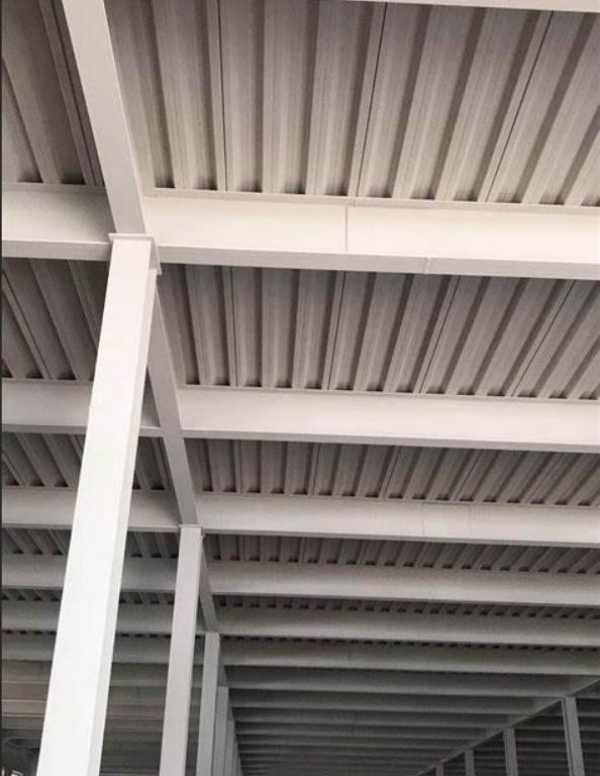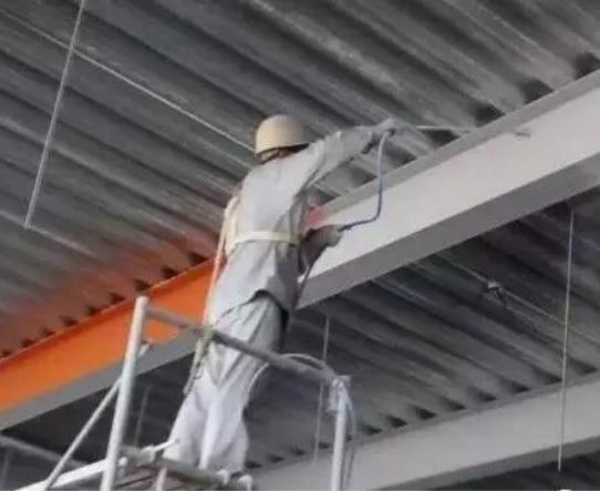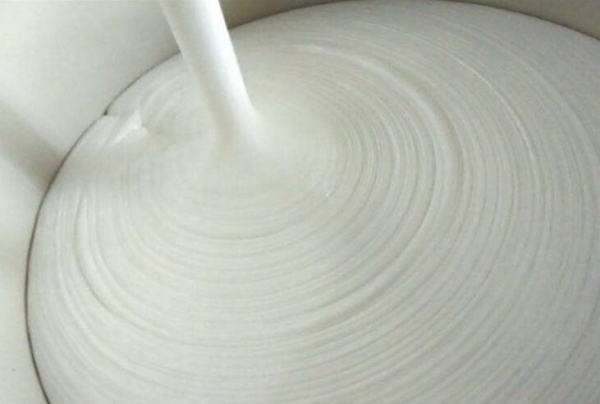QR Code

Intumescent fireproof coating
Can be divided into solvent-based and water-based two categories, the two types of coatings selected by the fire components are basically the same, so it is difficult to say how much difference in their fire performance, the solvent selected to use the film-forming substances. Solvent-based fireproof coating film-forming substances are generally selected chlorinated rubber, over lv vinyl, amino resins, phenolic resins, etc., the use of solvents for the spray paint sparse and so on. Water-based fireproof coating film-forming substances.

Non-intumescent fireproof coating
The coating basically does not undergo volume change when subjected to fire. Mainly, the coating itself is incombustible or non-combustible, which can prevent the flame from spreading, and the coating can decompose non-combustible gases under the action of high temperature or flame to dilute the concentration of oxygen and combustible gases in the air, so as to effectively prevent or retard the combustion. In addition, the coating at high temperatures or under the action of the flame can form a non-combustible inorganic glaze-like protective layer covering the surface of the combustible substrate to isolate the combustible substrate and the contact of oxygen, so as to avoid or reduce the occurrence of the combustion reaction, and in a certain period of time with a certain degree of thermal insulation.
According to the fire prevention mechanism, it is divided into intumescent and non-intumescent steel structure fireproof coating; non-intumescent steel structure fireproof coating refers to the steel structure fireproof coating that the coating does not expand and foam at high temperature, and becomes a fire-resistant and heat-insulating protective layer itself.
According to the latest national standard GB14907-2018, water-based/solvent-based non-intumescent ordinary/special steel structure fireproof coating. The coating thickness of non-intumescent steel structure fireproof coating shall not be less than 15㎜.
Non-intumescent steel structure fireproof coating fire insulation principle is that the coating basically does not undergo volume change when it is subjected to fire, but the thermal conductivity of the coating is very low, which delays the speed of heat transfer to the insured substrate, and the coating of the fireproof coating itself is non-combustible, and it acts as a barrier and prevents the heat radiation of the steel components, which prevents the flame and the high temperature from directly attacking the steel components.

There are some components in the coating that react with each other in case of fire to generate non-gas body is a process of heat absorption reaction, but also consumes a lot of heat, which is conducive to lowering the temperature of the system, so the fireproofing effect is remarkable, and it plays a highly effective fire protection and thermal insulation protection for steel. In addition, this kind of steel structure fireproof coating is subjected to fire when the coating changes to form a glazed protective layer, which can play a role in isolating oxygen, so that oxygen can not be protected by the flammable
WBM-01 finish-type fireproof coating construction instructions finish-type fireproof coating is water-based wood structure fireproof coating, by the "National Quality Supervision and Inspection Centre for Fixed Fire Extinguishing Systems and Fire-Resistant Components" test, the physical and chemical properties of the standard, fire performance of the first level. The technical performance indexes of the product are in line with GB12441-2005 standard. Through the use of advanced raw materials and special production processes, fire resistance time ≥ 20 minutes, to achieve national standards, when the flame burns to the paint, the formation of spongy charcoal layer on the substrate has a thermal insulation cooling and isolation of the role of the air, which can reduce the speed of propagation of the flame on the surface of the coated material, effectively prevent the rapid spread of fire to prevent the burning of the wood to achieve the purpose of burning. The paint coating, foaming and expanding in case of fire, forming a sponge-like fire insulation layer and fire source isolation, can effectively protect the flammable base in a certain period of time, and can be widely used in industrial and civil construction of wooden structural parts, flammable panels and flue, air ducts and other fire protection.
Technical index
No. Name of test items Standard requirements Measured results
1 State in dissolver No lumps, uniform state after stirring No lumps, uniform liquid state after stirring
2 Fineness, μm ≤ 90 85
3 Drying time, h Surface drying, ≤ 5 2 Drying, ≤ 24 6
4 adhesion, level ≤ 3 1 5 flame retardant time, min ≥ 15 25 construction method
5、Painting process adopts brush, spray or roll coating, and it can be painted evenly. The direction of brushing should be the same, do not cross or repeat brushing.
Precautions

Construction preparation:
Grass-roots construction:
(1) Mix water and paint in the ratio of (0.70~0.75):1, and mix it with a mixer for 20min (must ensure the mixing time, and the paint should be used as it is mixed), and make it into a thick slurry.
(2) Use a small amount of slurry to make horizontal stripes of thickness markers with a spacing of 2.5m, as a reference for spraying construction.
(3) sprayer from the waist to the top of the tunnel (from the bottom to the top) for spraying, each spraying thickness of 3 ~ 8.
(4) After the first spraying is basically dry, continue spraying for the second time, and so on, until the spraying is up to the designed thickness.
(5) Because the spraying surface is not smooth enough, so after the last spraying, we should use the material slurry to fill and level by hand immediately, so as to make the surface of the coating smooth and ensure that the coating reaches the designed thickness.
(6) After the completion of the grass-roots level, the coating surface is required to be flat, smooth and clean.
Thin and ultra-thin, that is, the difference in thickness, as well as the fire resistance limit is different; NCB (ultra-thin, according to the Shida Jinzun indoor ultra-thin steel structure fireproofing coatings) coating thickness of 0.5-2.13mm, the fire resistance time is 0.5-2h; NB (thin) coating thickness is generally in the range of 3-7mm, the fire resistance time 1.0-2.5h.
Generally, ultra-thin type and thin type steel structure fireproof coating are selected:
Thin-type fireproof coating is water-based steel structure fireproof coating, painted on the surface of steel components, the coating expands and foams to form a carbonised fire-resistant and heat-insulating protective layer in case of fire.

Copyright © 2024 Qingdao Eihe Steel Structure Group Co., Ltd. All Rights Reserved.
Links | Sitemap | RSS | XML | Privacy Policy |
TradeManager
Skype
VKontakte
